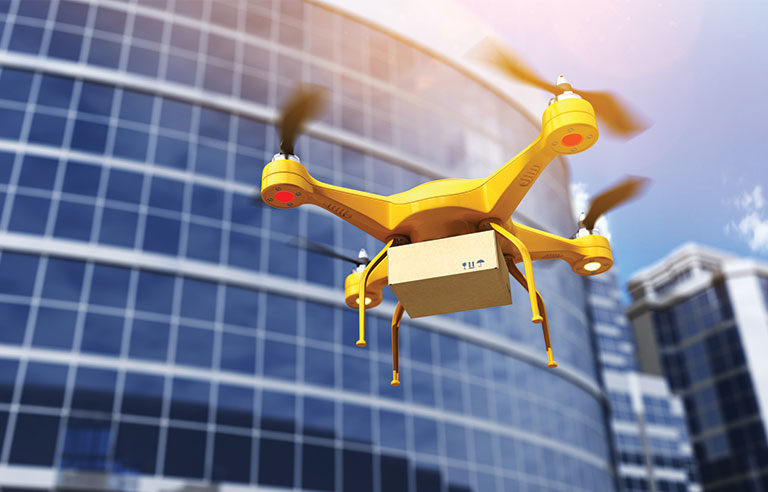National Academies urges FAA to ease approach to commercial drone safety regs

Washington — The Federal Aviation Administration should relax its “overly conservative” safety rules for commercial drone use to boost continued progress and integration, a new report from the National Academies of Sciences, Engineering, and Medicine concludes.
FAA regulates the commercial use of drones – more formally known as unmanned aircraft systems, or UAS – under 14 CFR Part 107, enacted in August 2016. Provisions include flying drones less than 400 feet above ground level and avoiding flying over unprotected individuals on the ground who are not part of a commercial operation, are under a covered structure or are inside a covered stationary vehicle.
The report, mandated by Congress and compiled by a 14-person committee, asserts that a “risk-averse culture” pervades FAA’s approach to approving regulations, preventing possible innovative drone applications such as inspecting cellphone towers and assisting firefighters.
“The fear of making a mistake drives a culture at the FAA that is often overly conservative with regard to UAS technologies,” the report abstract states, “especially given that UAS technologies do not pose a direct threat to human life in the same way as technologies for manned aircraft. … UAS operations should be allowed if they decrease safety risks in society – even if they introduce new aviation safety risks – as long as they result in a net reduction in total safety risk.”
In a June 11 press release, George Ligler, committee chair and proprietor of GTL Associates, urges FAA to “move away from the ‘one size fits all’ philosophy” for drone operations so it can better consider “new and unique challenges and opportunities, which make it important for the agency to take a broader view on risk analysis.”
National Academies offers several recommendations to FAA:
- Within six months, undertake a top-to-bottom change management process aimed at moving smartly to a risk-based decision-making organization with clearly defined lines of authority, responsibility and accountability.
- Within one year, establish and publish specific guidelines for implementing a risk-based process for certifying UAS and aircraft and granting operations approval.
- Identify classes of operations where the level of additional risk is expected to be so low that it is appropriate to base approval of those operations on requiring insurance in lieu of having a separate risk analysis.
The Department of Transportation in May announced the 10 participants in a pilot program intended to promote the safe commercial operation and integration of drones in agriculture, commerce, emergency management, human transportation and other sectors. In a press release, Secretary of Transportation Elaine Chao said data from the projects would influence “a new regulatory framework.”
In a statement issued in response to the report, FAA acknowledged the pilot program among its efforts to “safely accelerate UAS on multiple fronts.”
“The report confirmed that the FAA executive team has a consistent approach to risk management,” the statement reads. “The specific recommendations are aligned with FAA’s ongoing efforts, and we see them as an endorsement of our efforts and encouragement to accelerate our efforts, particularly in the area of change management.”
Post a comment to this article
Safety+Health welcomes comments that promote respectful dialogue. Please stay on topic. Comments that contain personal attacks, profanity or abusive language – or those aggressively promoting products or services – will be removed. We reserve the right to determine which comments violate our comment policy. (Anonymous comments are welcome; merely skip the “name” field in the comment box. An email address is required but will not be included with your comment.)

